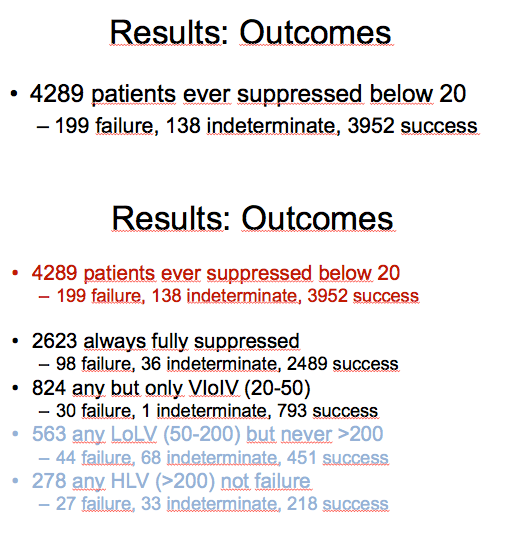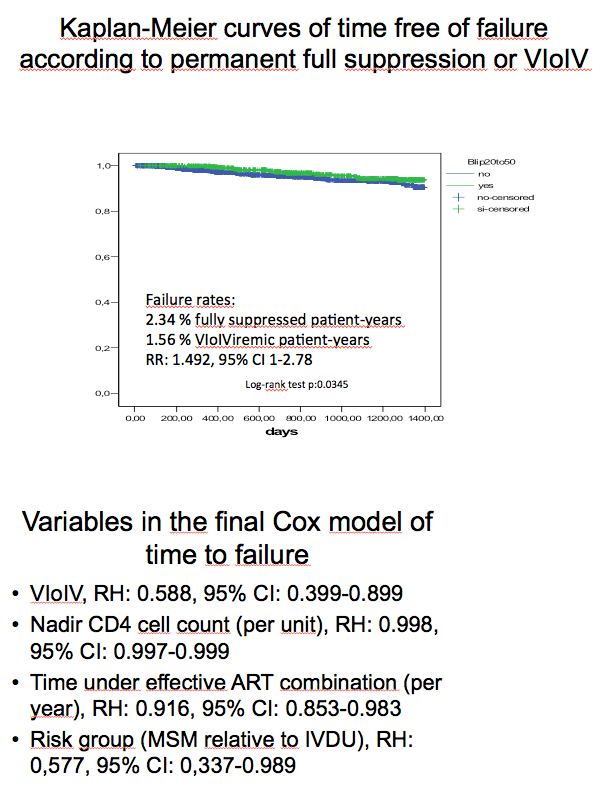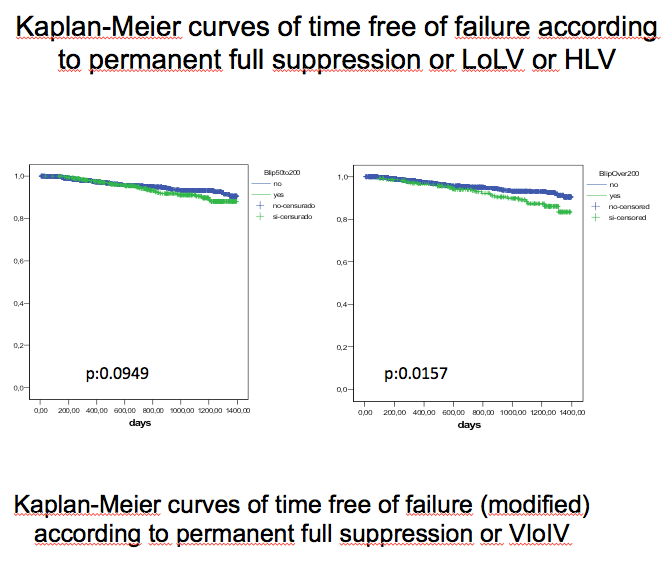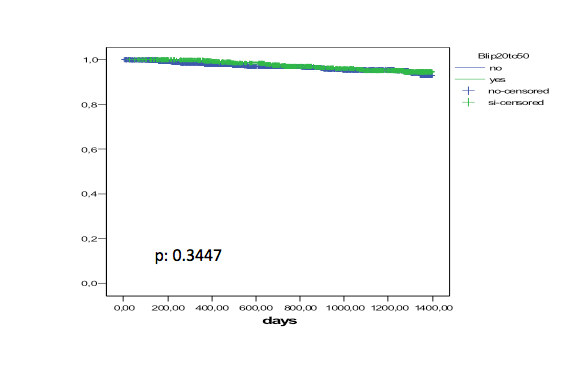 |
 |
 |
| |
Failure Risk Similar With 20 to 50 Copies and Always Under 20 Copies
|
| |
| |
20th International AIDS Conference, July 20-25, 2014, Melbourne
Mark Mascolini
Reaching a viral load between 20 and 50 copies lowered risk of virologic failure about 40% when compared with having blips above 50 copies, according to analysis of a large Spanish cohort [1]. Achieving and maintaining a viral load below 20 copies conferred no additional protection against subsequent failure.
Standard viral load assays available since 2009 measure HIV RNA levels as low as 20 copies/mL. Yet in most trials and cohort analyses, the efficacy cutoff remains 50 copies. As a result, little is known about the prognostic implications of attaining and maintaining a viral load below 20 copies versus between 20 and 50 copies.
To address this question, researchers in Spain analyzed everyone in the VACH Study Group--an open cohort of HIV-positive adults--who started antiretroviral therapy (ART) after January 1997 and (1) achieved effective viral suppression, defined as two consecutive viral loads below 50 copies, then (2) achieved full suppression, defined as a least one viral load below 20 copies. The VACH team used survival analysis to determine whether maintaining a load below 20 copies versus returning to a load between 20 to 50 copies or having blips above 50 copies affected risk of virologic failure, defined as two consecutive loads above 200 copies or one load above 200 copies followed by a change in ART or loss to follow-up.
Among 21,480 adults who started ART in the study period, 13,671 (64%) got their viral load below 50 copies. Of those 13,671 people, 6834 (50%, 32% of 21,480) trimmed their viral load below 20 copies, including 4289 (31% of 13,671) who reached full suppression after June 2009.
Proportions of women and men who reached a viral load below 50 copies were similar (65.8% and 63%), as were proportions of women and men who reached a load below 20 copies (26.5% and 26.0%). Median age at suppression below 50 copies was 38.6 years, while median age at suppression below 20 copies was 39.1 years. Nadir CD4 count did not differ substantially between people who reached a load below 50 copies and those who got below 20 copies (248.2 and 223.2 CD4s); nor did pretreatment viral load (5.05 and 5.02 log10 copies/mL).
Of the 4289 people who reached a viral load below 20 copies after June 2009, 2623 (61%) remained fully suppressed throughout follow-up. The researchers counted 824 people (31% of 2623) who subsequently had a viral load between 20 and 50 copies but not above 50 copies. There were 563 people (21% of 2623) who rebounded to between 50 and 200 copies but never above 200 copies.
Among fully suppressed people (viral load always below 50 copies), the virologic failure rate was 2.34% yearly. Among fully suppressed people who later had a viral load between 20 and 50 (but not above), the failure rate was 1.56% yearly. Bivariate Cox regression analysis indicated that people with a sustained viral load between 20 and 50 copies did not have a higher risk of virologic failure than people who remained consistently below 20 copies.
Multivariate Cox regression analysis identified four variables that lowered the risk of virologic failure compared with blips between 50 and 200 copies, at the following relative hazards (and 95% confidence intervals):
-- Viral load sustained between 20 and 50 copies: RH 0.588 (0.399 to 0.899)
-- Each unit higher nadir CD4 count: RH 0.998 (0.997 to 0.999)
-- Each year with viral load below 50 copies on ART: RH 0.916 (0.853 to 0.983)
-- Gay sex versus drug injecting as HIV risk: RH 0.577 (0.337 to 0.989)
The researchers concluded that, according to their definitions, risk of virologic failure is no greater with a sustained viral load between 20 and 50 copies than with a viral load consistently below 20 copies. But they stressed that "the selection criteria and variable definitions used in this study, and probably in most if not all epidemiological and even experimental [studies], probably have as deep an impact on the results as the biological factors themselves."
Reference
1. Teira R, Munoz-Sanchez P, Suarez-Lozano I, et al. Effect of viral suppression below 20 copies of HIV-RNA per millilitre of plasma on virological outcome of treated HIV- infected patients. AIDS 2014. 20th International AIDS Conference. July 20-25, 2014. Melbourne. Abstract TUAB0102.
---------------------------










|
| |
|
 |
 |
|
|